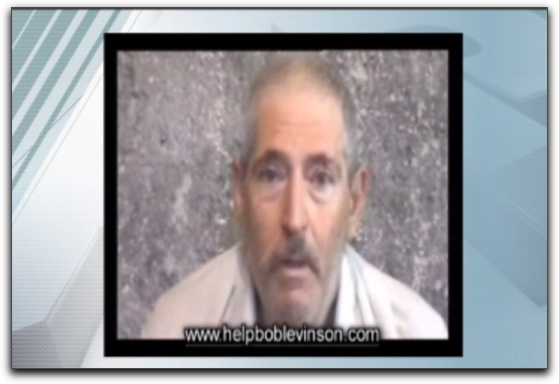Christine Levinson had endured nearly four years of despair since her husband, Robert, disappeared in Iran. Every glimmer of hope in the U.S. government’s search for him had faded away, every optimistic lead had ended with disappointment. Privately, some believed he was probably dead.
Then, in November 2010, the mother of seven, who had never given up hope, received an email from an unknown address. A file was attached.
But it would not open.
Frantically, she forwarded it to some computer savvy friends, people close to the family recalled. Can you open this, she asked? What is it?
Finally, the file opened. Her friends held the phone to the computer. And though she could not see his face, she immediately recognized the voice.
“My beautiful, my loving, my loyal wife, Christine,” Robert Levinson began.
It was a video, the proof of life that the family had sought for so long.
The video, which the Coral Springs, Fla., family released Friday, represented the most significant clue in a mystery that has confounded investigators from the start. But it did not end the family’s vigil, or answer the most important questions: Who was holding Levinson? And why?
On the tape, Robert Levinson, the once burly, gregarious retired FBI agent, looked haggard. His voice wavered. But he was alive.
“I have been treated well. But I need the help of the United States government to answer the requests of the group that has held me for three and a half years,” Levinson said. “And please help me get home.” He was a hostage.
It was the first breakthrough in the case since Levinson, a private detective, traveled to the Iranian island of Kish in March 2007. His family said he was there investigating cigarette smuggling for a corporate client. He spent one night in a hotel, meeting a fugitive named Dawud Salahuddin, a man wanted for the murder of an Iranian diplomat in the United States in 1980.
Levinson checked out of his hotel and vanished. Everything after that has been a mystery. The video, however, contained some tantalizing clues, and the government’s experts have studied each one.
The faint music in the background, it was determined, was Pashto wedding music from a region in Pakistan and Afghanistan, just over Iran’s eastern border. The email address traced back to an Internet cafe in Pakistan, according to several officials who, like others interviewed for this story, spoke only on condition of anonymity to discuss the case.
And then there were Levinson’s words. He said a “group” held him, not a government. And he said he had been held “here” for that time, suggesting he had not been moved. But his words appeared scripted. It could all be misdirection.
The video ignited the most hopeful round of diplomacy in his case to date. Publicly, Secretary of State Hillary Clinton announced in March that Levinson was alive and called on Iran to help find him. More privately, U.S. officials met with members of the Iranian government to discuss the case.
Momentum seemed to be building toward Levinson’s release, but just as quickly, the case cooled as the captors, who had always remained in the shadows, failed to make their demands clear.
None of several potential groups had a clear motive for picking up Levinson. But an American hostage, particularly a former FBI agent, would be considered a valuable commodity to any of them.
Or maybe, some U.S. officials said, the Iranian government was trying to confuse the effort.
But it was all just theory.
Both the U.S. government and the family had agreed to keep the existence of the video and pictures quiet. The Associated Press learned about them shortly after they arrived but delayed reporting about them because the government said doing so would jeopardize what was shaping up as the best chance to bring Levinson home.
But weeks became months, and officials soon became less optimistic about the talks between the U.S. and Iran.
On Friday, Christine Levinson and her son, David, broke out of the diplomatic process that had been unsuccessful for so long. On their family website, they posted a video message to the kidnappers.
“Please tell us your demands so we can work together to bring my father home safely,” David Levinson said.
In desperate plea, they released the hostage video to the world and asked whoever sent it to contact them again.
“We are not part of any government and we are not experts on the region,” David Levinson said. “No one can help us but you. Please help us.”
At the State Department, spokeswoman Victoria Nuland answered few questions about the video Friday.
“It was their decision to release it in an effort, they hope, to help bring more leads to the investigation,” she said. “So, obviously we’re all hopeful that this will bring more leads.”
Copy the Story Link
Send questions/comments to the editors.



Success. Please wait for the page to reload. If the page does not reload within 5 seconds, please refresh the page.
Enter your email and password to access comments.
Hi, to comment on stories you must . This profile is in addition to your subscription and website login.
Already have a commenting profile? .
Invalid username/password.
Please check your email to confirm and complete your registration.
Only subscribers are eligible to post comments. Please subscribe or login first for digital access. Here’s why.
Use the form below to reset your password. When you've submitted your account email, we will send an email with a reset code.